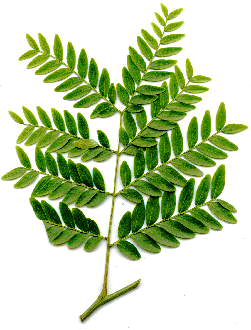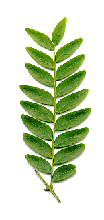A compound leaf consists of several, separated segments called leaflets. The leaflets are usually grouped in pairs around the elongated rhachis that corresponds to the midrib of a normal leaf.
Imparipinnate: Several paired
leaflets with an unpaired terminal central leaflet (example to the
left: rose)
Trifoliolate: One pair of
leaflets and a terminal leaflet (to the right, typical in clover
species)
Peltately pinnate: The blade
of a leaf with a peltate outline is pinnate, the basal leaflet is
inserted across the leaf stalk
(lower picture, example: lupin)
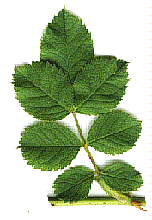
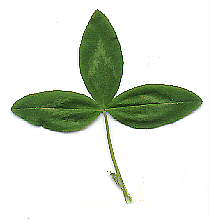

Palmate: with more than three leaflets arising from a single point, as in the fingers of a hand. The midrib is not elongated. (example below: chestnut; Aesculus hippocastanaeum).

Bipinnate: The primary
leaflets themselves are divided in a pinnate manner (to the left,
example: Common Meadow Rue; Thalictrum flavum)
Multipinnate: Typical for
numerous umbels (to the right)
Interruptedly pinnate: Among
large pairs of pinnate leaflets sit smaller ones (picture below,
typical for many Rosaceae)
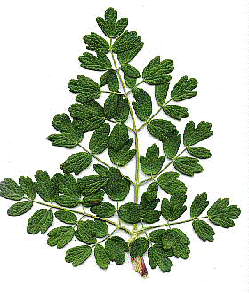
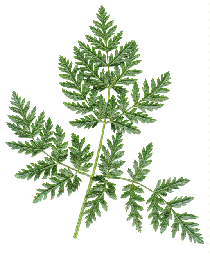

Paripinnate: The terminal leaflet does not develop, atrophies and may end as a hardly discernible prickle (example: Gleditschia tricanthos)
